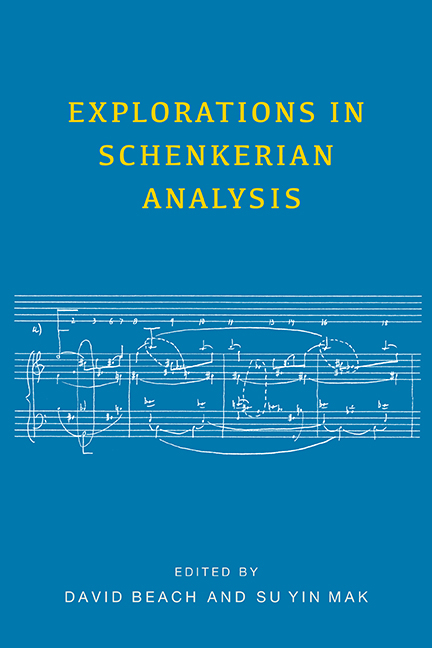Book contents
- Frontmatter
- Contents
- Preface
- Part One Eighteenth Century
- 1 A Letter about the C-Major Fugue from The Well-Tempered Clavier, Book 1
- 2 The Opening Tonal Complex of Bach's St. Matthew Passion: A Linear View
- 3 Recurrence and Fantasy in C. P. E. Bach's Rondo in G Major
- 4 Voice-Leading Procedures in Galant Expositions
- 5 The First Movements of Anton Eberl's Symphonies in E-flat Major and D Minor, and Beethoven's Eroica: Toward “New” Sonata Forms?
- Part Two Early Nineteenth Century
- Part Three Late Nineteenth Century
- Appendix: An Interview with Edward Laufer
- List of Contributors
- Index
2 - The Opening Tonal Complex of Bach's St. Matthew Passion: A Linear View
from Part One - Eighteenth Century
Published online by Cambridge University Press: 28 June 2018
- Frontmatter
- Contents
- Preface
- Part One Eighteenth Century
- 1 A Letter about the C-Major Fugue from The Well-Tempered Clavier, Book 1
- 2 The Opening Tonal Complex of Bach's St. Matthew Passion: A Linear View
- 3 Recurrence and Fantasy in C. P. E. Bach's Rondo in G Major
- 4 Voice-Leading Procedures in Galant Expositions
- 5 The First Movements of Anton Eberl's Symphonies in E-flat Major and D Minor, and Beethoven's Eroica: Toward “New” Sonata Forms?
- Part Two Early Nineteenth Century
- Part Three Late Nineteenth Century
- Appendix: An Interview with Edward Laufer
- List of Contributors
- Index
Summary
Several scholars have written about the tonal organization of the St. Matthew Passion, including Friedrich Smend, Hermann Abert, and Eric Chafe, the most prominent English-speaking Bach scholar to address this topic. Yet no one has analyzed the tonal plan of the Passion (either in part or in whole) from a linear standpoint. Schenker evidently had little interest in structural connections among movements of large-scale works, perhaps because such connections are looser than those that bind a single movement together. It would therefore seem that any linear interpretation of tonal relations among movements would have to go beyond the limits of Schenker's theory.
It is precisely the looser kind of connections that I wish to explore in the opening eight numbers of the St. Matthew Passion (i.e., until the aria “Blute nur”). I believe that these numbers, taken together, exhibit tonal connections not altogether dissimilar to what one might observe among successive numbers of an opera, or among movements of a symphony or sonata. If we begin by considering the keys that Bach employs in the first eight numbers, we may note that, with only a few exceptions, they are closely related to the key of E minor in which the Passion begins. To borrow a term from Johann David Heinichen's 1711 treatise, a primary source for Chafe's analytical approach to key relations in Bach's vocal music, most of the keys used in the opening scene lie within the six-key ambitus of E minor (G–a–b–C–D–e, the same as for G major). But the opening scene is not unified in the sense of being directed toward closure in E minor. Only at the end of Part 1, with the grand chorale fantasia “O Mensch, bewein dein Sünde groß” in E major, does Bach bring about closure on the same tonic as that of the opening chorus. Nor can one infer a unified tonal plan for the whole Passion, because Part 2 ends in C minor rather than E minor or major. And so it should be: the Passion story does not come full circle, but ends in a different spiritual place from its starting point, with the believers not only mourning Jesus's death but also looking ahead to the redemption of humanity that his Crucifixion makes possible.
- Type
- Chapter
- Information
- Explorations in Schenkerian Analysis , pp. 12 - 25Publisher: Boydell & BrewerPrint publication year: 2016



